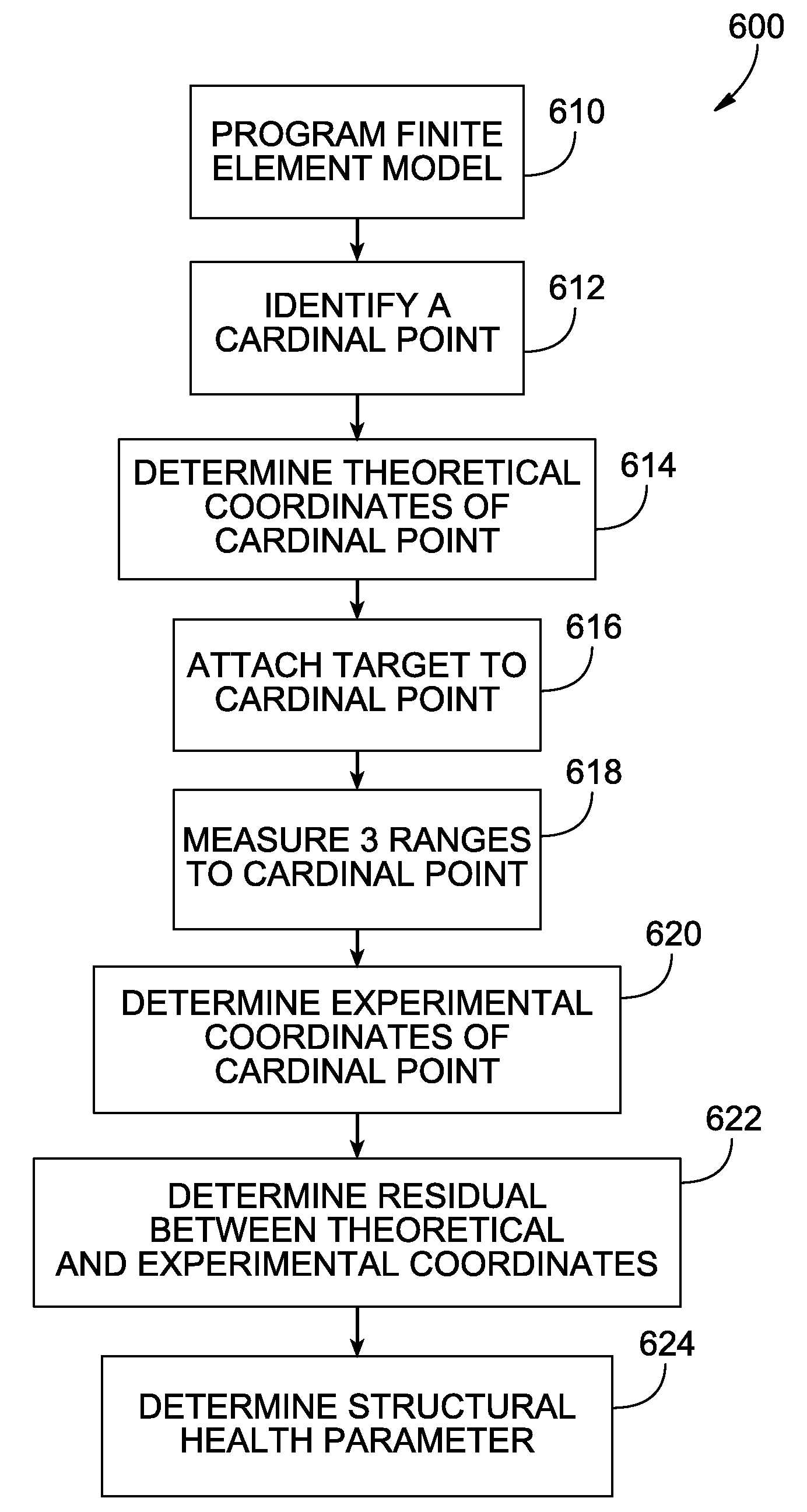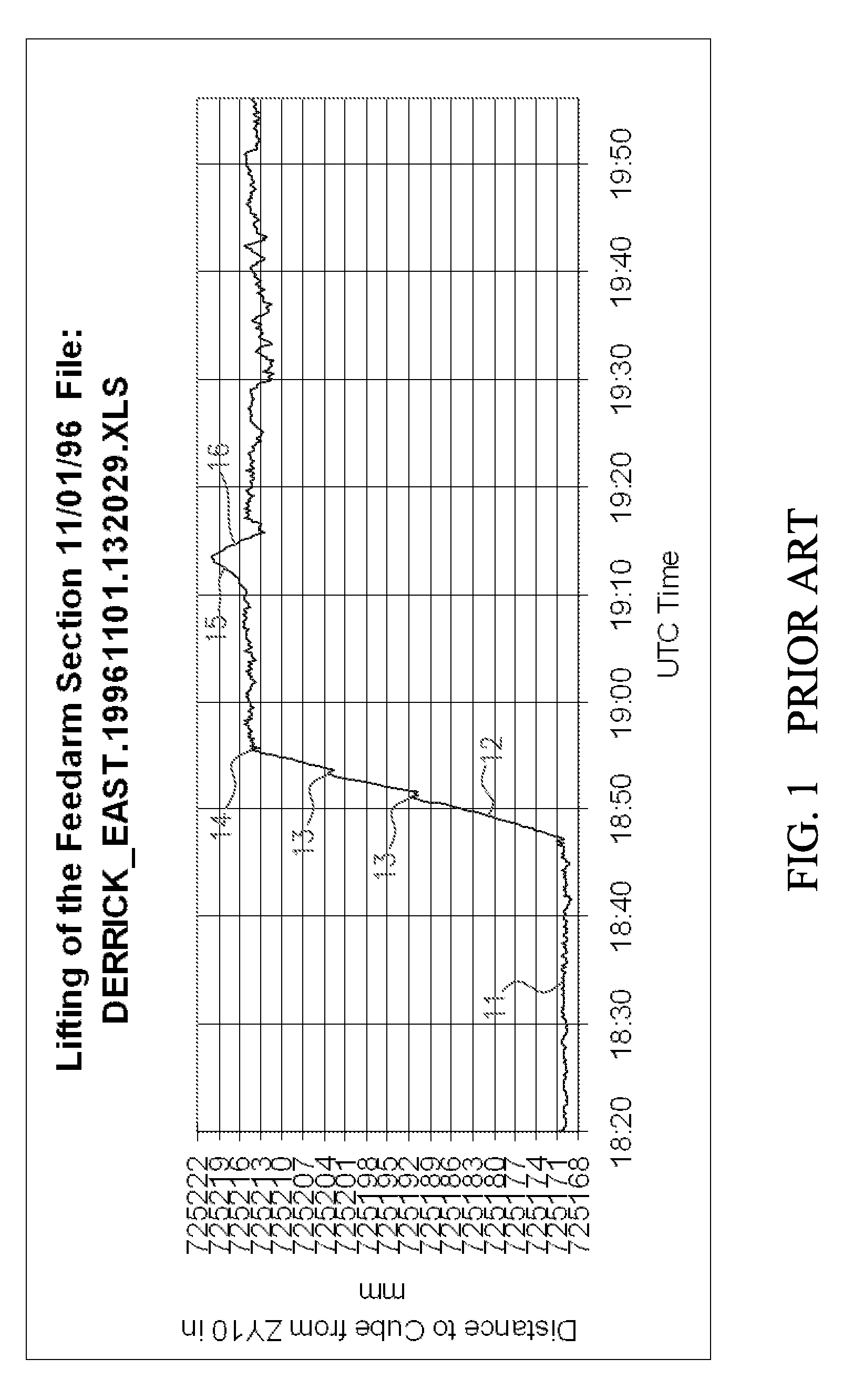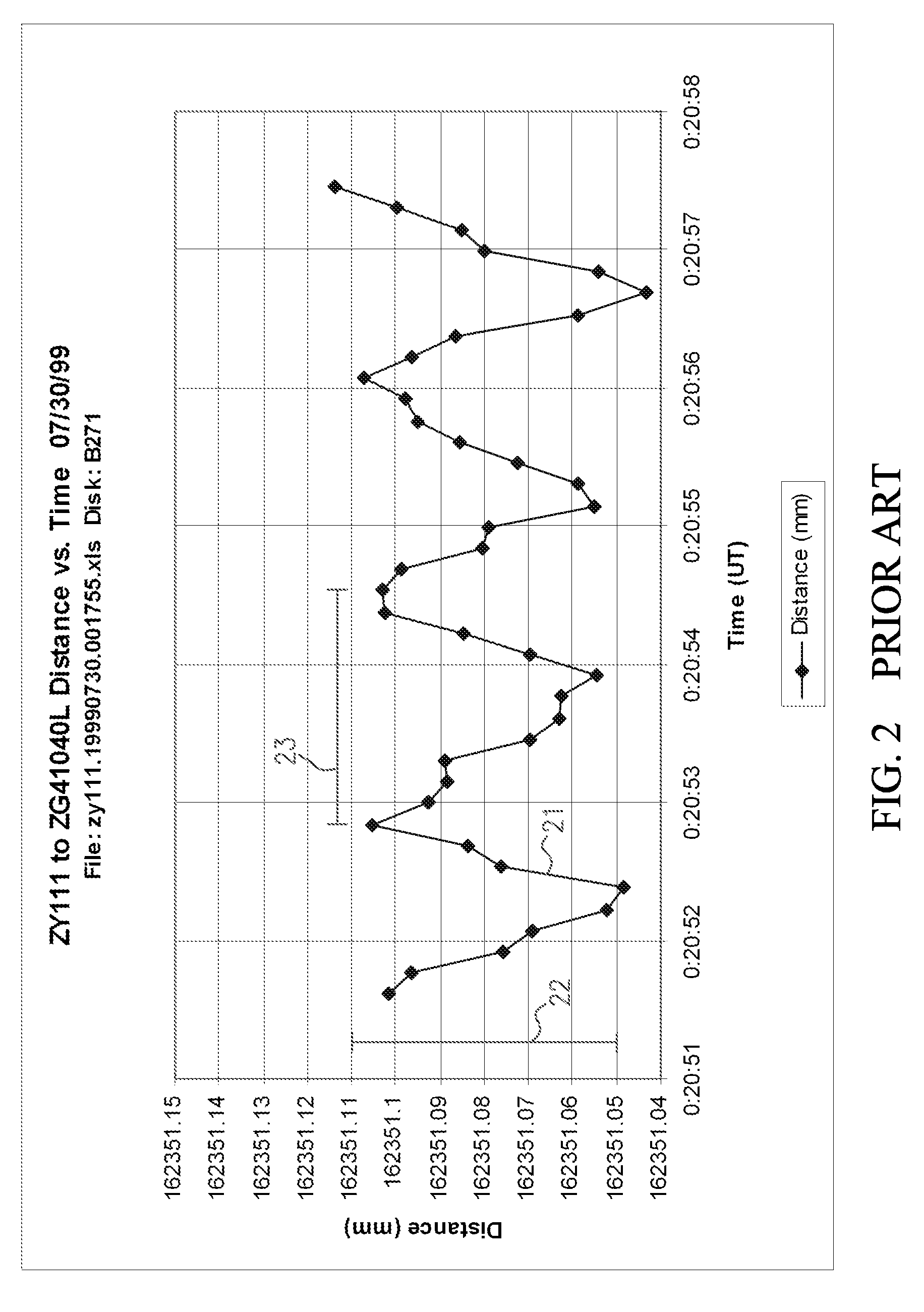Methods for modeling the structural health of a civil structure based on electronic distance measurements
a technology of electronic distance measurement and structural health, applied in the direction of optical radiation measurement, electrical/magnetic measuring arrangement, navigation instruments, etc., can solve the problems of catastrophic failure, inadequate load capacity, and catastrophic failur
- Summary
- Abstract
- Description
- Claims
- Application Information
AI Technical Summary
Benefits of technology
Problems solved by technology
Method used
Image
Examples
example electronic
Distance Measurements for Large-Scale Metrology
[0067]Example measurements made with the PSH97 instrument described hereinabove will illustrate the utility of EDM for Structural Health Monitoring.
[0068]GBT MEMO 160 Laser Rangefinder Deflection Measurements of the GBT Derrick, incorporated by reference herein, reports on measurements of the deflection of a derrick crane while lifting a 89 500 pound load from a distance of approximately 725 meters from the instrument. One of the figures is reproduced herein as FIG. 1. Note that prior to the time around 18:50 11 the load was hanging freely near the ground with the boom at approximately 45 degrees to the horizon. Starting around 18:50 12 the boom was raised with pauses to adjust the whip line 13 which slightly adjusted the angle of the load, and thus the center of gravity. When the boom reached approximately 75 degrees 14, the boom was swung right 15, and then the boom was lowered slightly 16.
[0069]Note that as the boom was raised 12-14,...
PUM
 Login to View More
Login to View More Abstract
Description
Claims
Application Information
 Login to View More
Login to View More - R&D
- Intellectual Property
- Life Sciences
- Materials
- Tech Scout
- Unparalleled Data Quality
- Higher Quality Content
- 60% Fewer Hallucinations
Browse by: Latest US Patents, China's latest patents, Technical Efficacy Thesaurus, Application Domain, Technology Topic, Popular Technical Reports.
© 2025 PatSnap. All rights reserved.Legal|Privacy policy|Modern Slavery Act Transparency Statement|Sitemap|About US| Contact US: help@patsnap.com



